SI1 vs Vs2 Diamonds – Which One is Better?
Key Takeaways
- VS2 and SI1 are two of the most popular clarity grades on the GIA’s scale, for shoppers hoping to get a good deal on an eye clean stone.
- As such, many, many diamonds at the VS2 and SI1 clarity grades are totally eye clean, but much more affordable than diamonds with higher clarity grades.
- The SI1 clarity grade is the lower grade of the two, which means it is the more affordable. If you’re shopping for a diamond around the 1 – 1.5 carat range (or below), then there’s a strong chance you’ll find plenty of eye clean options.
- If you’re looking at larger diamonds, however, or diamonds with a cut that tends to show off inclusions more than others (say, the Emerald or the Asscher) then VS1 may be the better grade.
In the world of diamonds, you can get lost in the sizes and grades. Most reputable jewelers who are on your side and protecting you will point you in the direction of a diamond with a low clarity grade and an eye clean appearance. In most circumstances, this will often lead to a choice between an SI1 or VS2 diamond – but what does that mean?
While, by now, you probably know a little about clarity grades and inclusions, chances are you’re still stuck in the theory of it all, and might not know how clarity really impacts the appearance of a diamond.
So, should you buy an SI1 diamond or a VS2? We’re breaking it all down on these two great diamond options of value for your money: SI1 vs VS2.
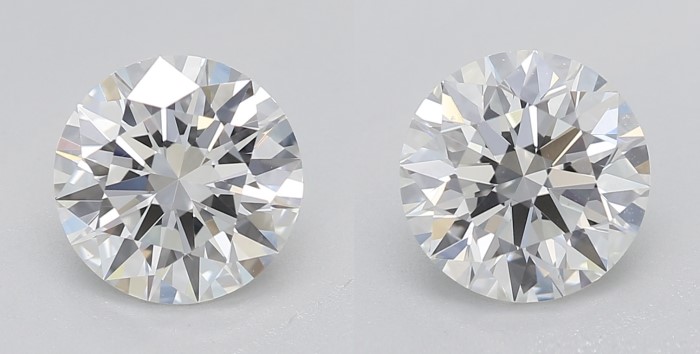
Diamond Clarity
Before you get into the process of choosing an SI1 or VS2 diamond, you should know what an SI1 diamond is, compared to a VS2 diamond. Diamonds are graded on their clarity, which is done by grading their visual appearance and how many inclusions or blemishes they have. The clarity of the diamond can affect its value and overall price.
The diamond clarity scale for GIA, who actually created the 4C’s grading scale, contains the following clarity grades from highest to lowest:
- Flawless (F): No inclusions or blemishes are visible using 10x magnification inside the diamond and outside
- Internally Flawless (IF): No inclusions and only blemishes are visible using 10x magnification inside the diamond, but might have minor outside ones
- Very Very Slightly Included 1/2 (VVS1 & VVS2): Inclusions are difficult to see under 10× magnification
- Very Slightly Included 1/2 (VS1 & VS2): Inclusions are minor and range from difficult to somewhat easy to see under 10x magnification
- Slightly Included 1/2 (SI1 & SI2): Inclusions are noticeable under 10x magnification and sometimes to the naked eye
- Included 1 (I1): Inclusions are obvious under 10x magnification with larger flaws seen by the naked eye and may affect transparency and brilliance
As you can see, an SI1 diamond is graded as having small inclusions which are noticeable under 10x magnification and sometimes to the naked eye. A VS2 diamond has very small, minor inclusions and range from difficult to somewhat easy to see under 10x magnification.
For both SI1 and VS2 diamonds, inclusions are almost always clean to the naked eye. But it’s important to note that inclusions can sometimes be seen by the naked eye in SI1 clarity.
The Clarity Inclusion Scale
During the clarity grading process, a diamond is graded in relation to the number of inclusions and blemishes on a scale ranging from Flawless to Included. The GIA diamond clarity scale grades the size, number, position, relief, and the type of inclusion or blemishes present in the diamond, as well as how easily it can be seen at 10X magnification to determine a diamond’s clarity grade.
As you can see in the following GIA grading scale, both SI1 diamonds and VS2 diamonds contain inclusions. A VS2 diamond is graded slightly higher than an SI1 diamond with minor inclusions seen under 10x magnification.
What’s the Difference Between SI1 and VS2?
The difference is typically found only under 10x magnification, and refers only to a very small difference in the size, number and significance of a diamond’s inclusions.
For this reason, two similar diamonds – with one featuring a clarity grade of SI1, and the other a clarity grade of VS2 – could look almost identical in person, and without the 10x magnification used by gemologists to appraise the clarity of diamonds.
While both clarity grades are considered to offer many eye clean diamonds to shoppers, some larger SI1 diamonds will feature slightly visible inclusions – although we’ll go into more detail on that subject below. For now, suffice to say that the difference between SI1 and VS2 diamonds is marginal, but capable of growing more significant as the size of the diamond in question increases.
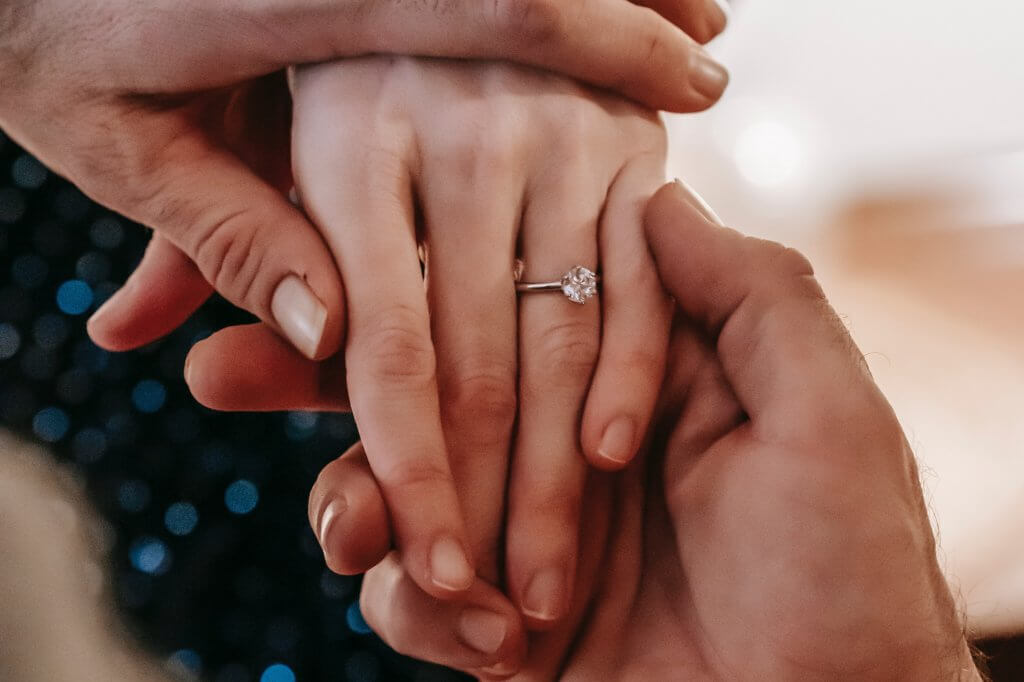
Are SI1 and VS2 Diamonds Eye Clean?
In general, yes. Both SI1 and VS2 diamonds can appear eye clean, with no inclusions being large or significant enough to impact the first-impression made by the stone. Only under magnification will the majority of these inclusions be visible, although some SI1 diamonds may feature inclusions that will very occasionally catch in your vision.
Eye clean is a term used to describe a diamond that appears flawless to the naked human eye from a short distance, but may contain imperfections that are visible under magnification. Eye clean diamonds have a high value, but with a lower price than flawless diamonds. This is why having a diamond certification, such as a GIA graded report, accompanying the diamond is so important when buying a diamond.
Both SI1 diamonds and VS2 diamonds are typically eye clean. They both contain small inclusions, but both require magnification to spot them. Out of the two, an SI1 diamond is more likely to have an inclusion that is sometimes visible to the naked eye, but more often than not, both are eye clean.
Size Matters
When discussing buying options alongside the clarity and number of inclusions in both SI1 and VS2 diamonds, size plays an important part in choosing the right diamond according to the inclusion inside. The larger the diamond, the easier it is to spot inclusions with the naked eye. A good rule of thumb is the bigger the size of the diamond, the higher the clarity grade should be.
While a clarity grade of SI1 won’t show any inclusions in a smaller diamond, such as a 0.7 carat, an SI1 diamond will showcase more of the flaws to the naked eye in a larger diamond, like a 4 carat or greater. The higher clarity grading of VS2 is recommended for larger diamonds with 4 carats or more.
For instance, this 5 Carat I-VS2 Princess Cut Diamond will certainly hold a slight edge over a SI1 diamond of a similar size, cut, color. The difference between the two stones will be pretty slim, but it will be there, nonetheless.
There is, of course, no ‘right’ or ‘wrong’ as far as carat size goes, but, these days, trends are definitely falling in favor of larger diamonds – and that means shoppers need to be more aware of the subtle differences between clarity grades than ever before. Wow factor is definitely dependent on an above-average stone, but also on that stone’s eye cleanliness.
Does Small Diamond Clarity Matter?
Yes, though not quite as much as clarity matters to large diamonds. SI2 is a perfectly good choice for smaller diamonds.
Just because we said it’s more important that larger diamonds are graded at VS2 or higher, that’s not to say that you can dip way down the clarity scale for smaller diamonds. SI2 should generally be your minimum, as it gives a necessary level of reassurance over the diamond’s appearance.
We would, however, never recommend buying an SI1 diamond online, since some diamonds featuring this clarity grade can still feature visible inclusions – even if those inclusions are only minor. Eye cleanliness remains a key factor to any strong diamond purchase, even if that diamond is a smaller size.
This is a great way to get an affordable engagement ring. A smaller diamond with a clarity grade of SI1 (and, it goes without saying, a good cut and color) can look absolutely stunning in the right setting – and on the right finger, of course.
Obviously, we would still recommend even those looking for VS2 diamonds see them in-person before committing. It’s quick and easy to connect with a reputable local jeweler, and to learn what these two clarity grades actually mean in a real diamond.
SI1 vs VS2 in Price
Prices for SI1 and VS2 diamonds can be very similar, with the differences pertaining mostly to other factors like the cut, color, and carat. Even so, the higher the clarity grade, the more expensive the diamond will be – even if that difference turns out to be pretty small. The same can be said with the carat size. The higher the carat size, the higher the price will be.
Color and Cut also affects the price of an SI1 and VS2 diamond. A perfectly-cut diamond will help hide inclusions, and a high-quality cut helps strengthen its color and quality.
Let’s take a look at two examples of SI1 vs VS2 diamonds in price:
A 1-carat, VS2 diamond was priced at $7,639 while the 1-carat, SI1 version was $7,266.
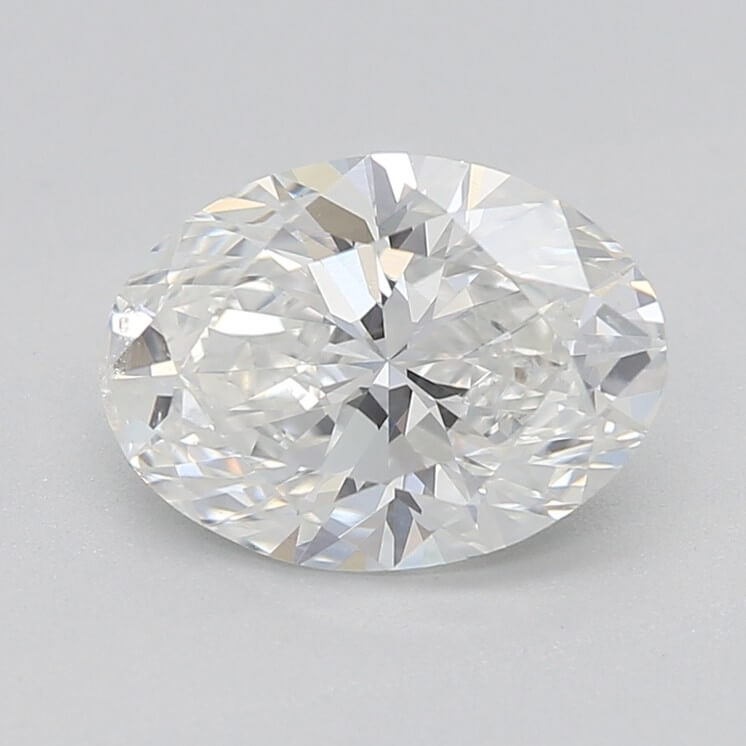
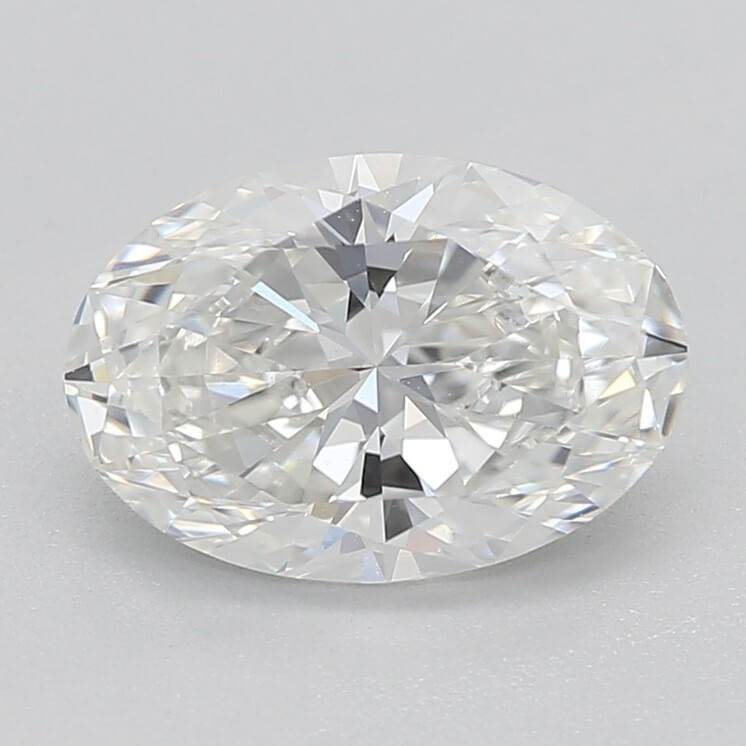
The Round, 1-carat, G Color, SI1 Clarity diamond on the left costs around $7,400. And the Round, 1-carat, G Color, VS2 Clarity diamond on the right costs $8,300. As you can see, the cut, color and carat of both diamonds are exactly the same, leaving only the difference in clarity. The $900 price difference between the SI1 and VS2 diamonds is specifically related to the clarity levels between the diamonds. The VS2 diamond has less inclusions and a higher level of clarity.
Examining the prices of larger sized SI1 and VS2 diamonds, we see an even greater difference between the two. This Round, 4-carat, Color G, Clarity SI1 diamond costs $84,000, whereas the Round, 4-carat, Color G, Clarity VS2 diamond costs $116,000. The price difference jumps to a whopping, $32,000, due in large to the higher clarity grading/carat size of the diamond. With larger-sized diamonds, inclusions and flaws are clearly showcased on the SI1 diamond. This makes the clarity grade of VS2 an extremely important aspect for a high value diamond, accompanied by a larger price tag.
GIA Certification
The only way to make sure the diamond’s clarity grading is 100% authentic is by obtaining its GIA Diamond Grading Report. Every diamond that completes the GIA grading system and receives a complete assessment of the stone’s 4 C’s (color, clarity, carat and cut) receives a GIA certification grading report. The diamond then receives a laser-inscribed, GIA certification number with a diamond certificate.
With a GIA grading report, the clarity grade, and a diamond plot, which maps out the diamond’s flaws, both internally and externally, will provide the exact specs of the gem. The report will plot out the location of any inclusions or blemishes that might exist but cannot be seen by the naked eye.
This is another reason why it’s so important to see the diamond in person, too. When it comes to VS2 and SI1 diamonds, the diamond plot can make it look worse than it really is, since it maps out inclusions that you would not otherwise have spotted. So, you can use the GIA report as a great indicator of the diamond’s overall quality, alongside your own impression of the diamond when you see it in person.
We do not recommend any diamond, SI1 or VS2, that does not come with a GIA grading report. You can check the authenticity of over 2 million diamonds using our GIA Diamond Look Up.
Does it have to be GIA certified?
There are other labs, but we would only ever recommend shoppers look at diamonds that have been graded specifically by the GIA – or, failing that, the AGS. Never buy a diamond that has not been certified at all.
Some jewelers – particularly the larger chains – certify their diamonds in house, which merely means that they do not pay for the diamonds to go through a third-party lab. While it may sound cynical, there is a high risk that these diamonds are being marked a lot higher than they would be by a more reputable and unbiased lab like the GIA. Why? Because the vendor can sell them for a better price, while being able to offer the shopper a ‘report’, even if it isn’t from a third-party.
Not much better than that are the for-profit labs, which are also popular among the bigger chain jewelers. These labs turn around huge volumes of diamonds very quickly, and often give them higher grades than they ought to have, which works out well for the vendor, but not for the buyer.
We do not recommend any diamond, SI1 or VS2, that does not come with a GIA or AGS grading report. Not only do we consider their reports to be the clearest – which is great for first-time buyers – but they are also the most consistent labs. The GIA is not there for profit, and it was formed in response to the lack of transparency many jewelers were offering shoppers back in the 1930s.
GIA diamonds are very popular, and some scammers will try to forge reports from this lab. You can, however, check the authenticity of over 2 million diamonds using our GIA Diamond Look Up.
SI1 or VS2 – Which One is Better?
While it depends on the size of your diamond – and, of course, your budget – we would generally lean toward VS2, since it offers a little more reassurance over the eye cleanliness of your diamond – particularly if you are looking to make a strong impact with an above-average carat weight for your engagement ring.
In the end, the best way to decide between the SI1 vs VS2 diamonds is by choosing the one that doesn’t have any visible inclusions to the naked eye. And when magnified by 10x, the inclusions are small and insignificant. If you had your mind made up that you would be holding out for a VS2 diamond, but find yourself holding an SI1 diamond with no visible inclusions, then don’t fixate on what’s reported within the diamond’s GIA report – that slightly lower grade is irrelevant to you if the stone is eye clean.
Still, in terms of larger diamonds, VS2 diamonds are the way to go for getting a beautiful diamond with great value. It would be all too easy for you to keep looking for larger and larger diamonds until you reached the very limits of your budget, but you should never compromise the clarity quality in larger diamonds, or you’ll end up with a diamond that contains visible inclusions.
Like discoloration, these inclusions negatively impact the diamond’s appearance and look far worse than it would if you simply chose a slightly smaller diamond in order to accommodate your budget.
Use the information in its GIA Diamond Grading Report to verify its clarity and inclusion grading and consult your jeweler as to which diamond is the best value for your money.
Bottom Line: Buying a diamond with either an SI1 or VS2 clarity grading will get you a beautiful diamond without breaking the bank.
To learn more about SI1 and VS2 diamonds, check out our Diamond Search! You can now search from our extensive diamond collection with our innovative diamond search engine.

Mar 17, 2022 By Willyou.net
Master The Art Of Jewelry Inspection With A Jeweler Loupe
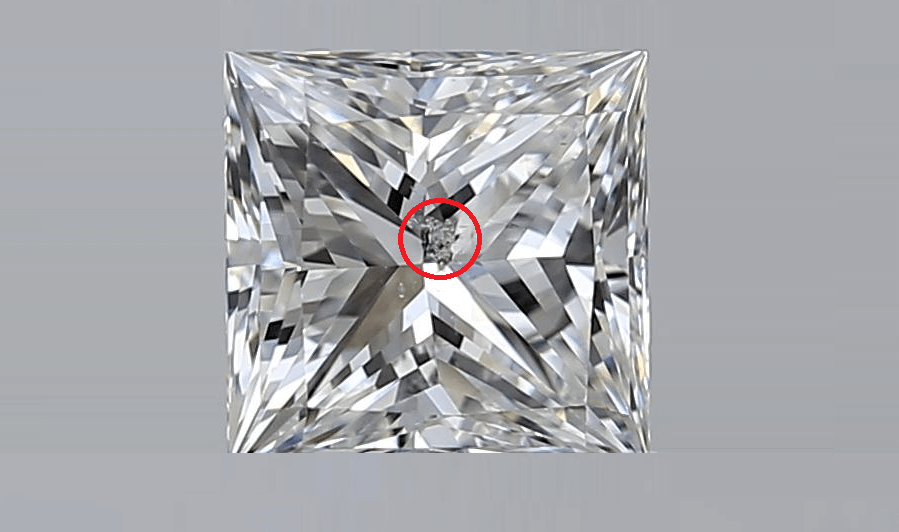
Mar 26, 2022 By Willyou.net
The Negative Effect Of Internal Graining On Diamond’S Value








